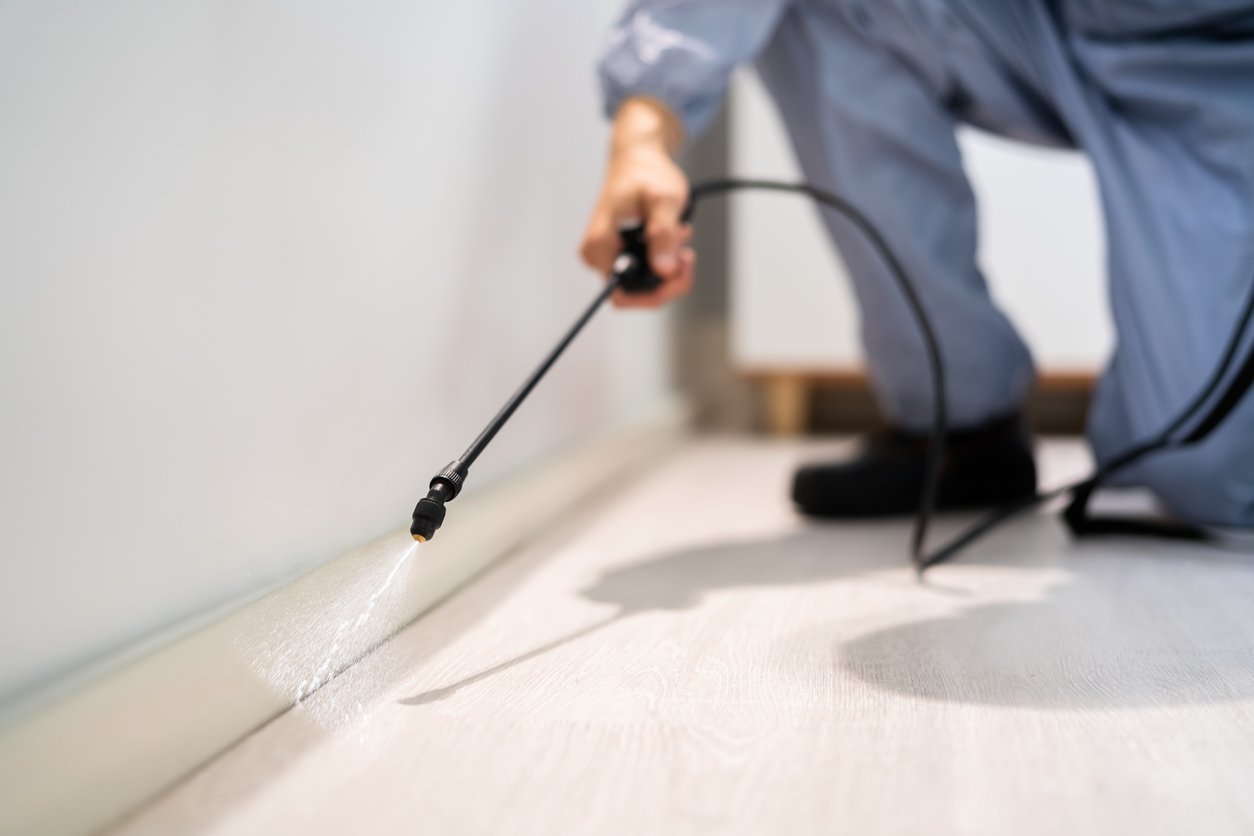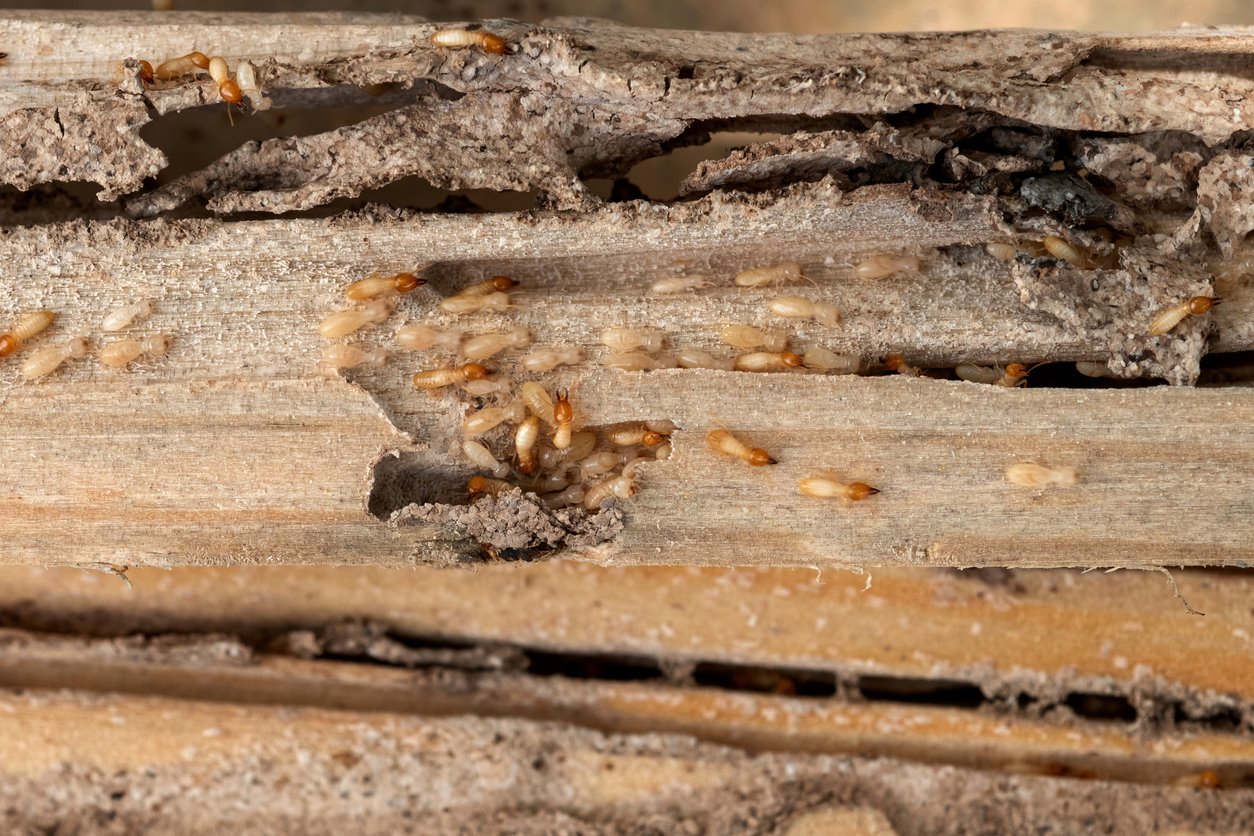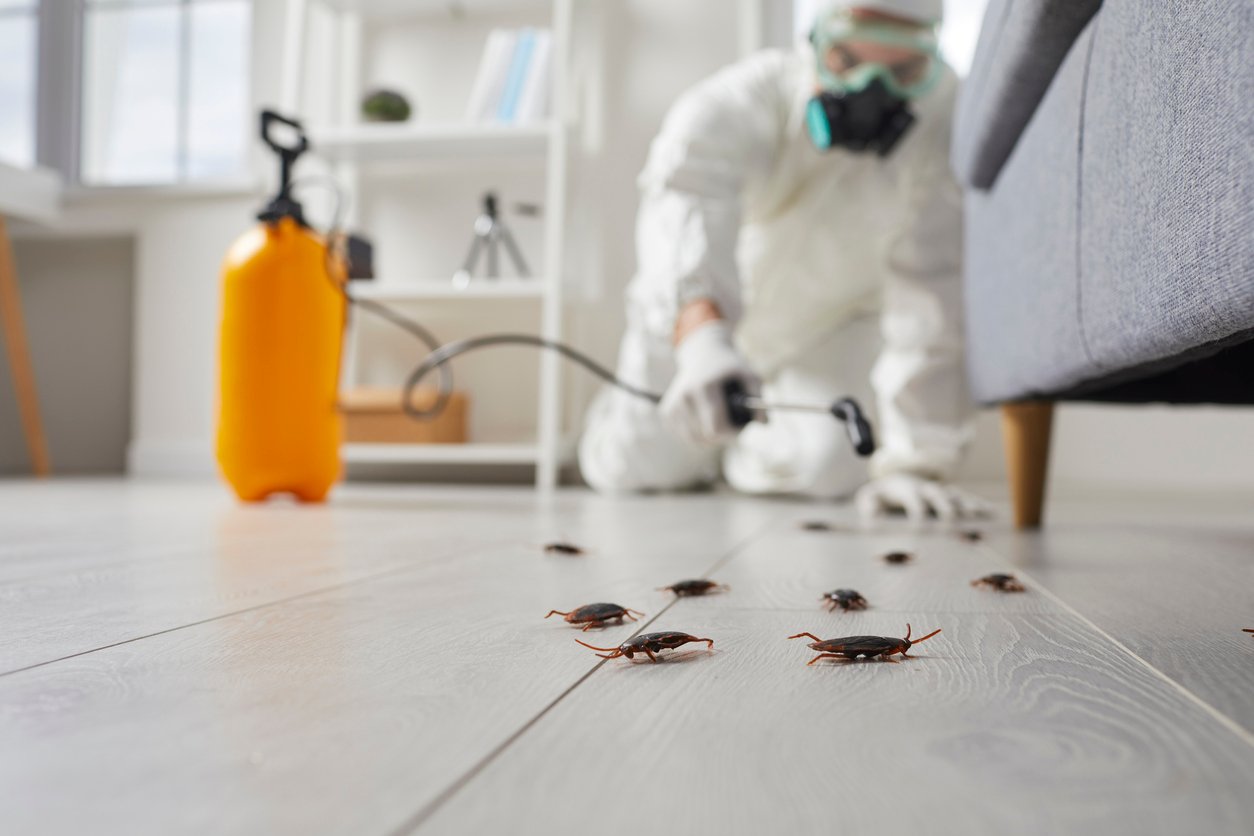10 Common Misconceptions About Pest Control

When pests show up in your home, it’s natural to want fast answers on how to get rid of them. Friends, forums, and social media are full of advice, but not all of it holds up. In fact, some commonly-shared tips don’t work at all, and some may even make the problem worse. Let’s set the record straight.
Here are 10 common misconceptions about pest control, along with explanations of what actually works and why.
1. If pests show up, it means my house isn’t clean.
Clean homes can still have pest problems. While food messes and clutter can sometimes increase the risk of infestation, pests ultimately want three things:shelter, food, and moisture. If those things are present, pests can settle in regardless of your home’s cleanliness. Even spotless homes may have hidden leaks, crumbs under appliances, or damp areas that invite pests. Typically, moisture collects under sinks or near water heaters, providing the damp conditions that all kinds of pests, including cockroaches, need to reproduce. Your home may look spotless to you, but even a grain of sugar or a small grease spot that’s out of view can be enough to attract ants.
Mice, meanwhile, often seek nesting spaces in wall voids, basements, attics, or other places that tend to be overlooked during routine housecleaning.
What helps:
-
- Seal cracks and gaps around foundations, windows, and doors using weatherproof caulk or sealant to prevent pests from entering your home.
- Store food in airtight containers (including pet food and dry goods) to block access and cut off scents.
- Clean up crumbs, grease, and spills, especially under appliances and in corners.
- Fix leaks under sinks or around dishwashers that attract pests to moisture.
- Use dehumidifiers in damp areas to make the space less suitable for pests like cockroaches and silverfish, which need humid air to avoid drying out and to reproduce.
2. If I don’t see pests, I don’t have a problem.
Many pests are nocturnal or prefer to stay hidden in walls or crawl spaces or behind appliances. Cockroaches and rodents are often active only at night, when there is less light, noise, and activity. During the day, many pests stay tucked away inside walls, behind appliances, or deep in storage areas where they’re unlikely to be disturbed. As a result, pest activity can go unnoticed for a long time.
Even if you don’t see pests, there are often signs that they’re present. Rodents may leave behind gnaw marks, droppings, or greasy rub marks along walls and baseboards where they regularly travel. Cockroaches often leave behind small, pepper-like droppings or smear marks in corners.
While you might not always be able to see pests, you can sometimes smell them. Musty or sour odors in closed-off areas often come from droppings, grease trails, or nesting materials that build up in damp, enclosed spaces.
What helps:
- Check under sinks, behind stoves, and around water heaters for signs of activity.
- Use a flashlight to inspect baseboards, storage areas, and corners that don’t get regular cleaning.
- Pay attention to odors, as musty smells may point to hidden pest buildup.
- Look for small signs like crumbs, smears, or damaged packaging (rodents often chew through boxes or bags to get to food).
3. Cats and other pets can effectively control rodents.
While some pets may catch a mouse or two, they can’t keep up with a growing rodent infestation. Rodents breed quickly and often nest in places pets can’t reach, such as wall voids, crawlspaces, or attic insulation. Mice are cautious and tend to avoid open spaces or areas where pets are frequently active. Rather than eliminating the problem, a pet’s presence may simply push the rodents into quieter parts of the home. Even if your pet is an effective pest hunter, relying on a cat or dog to control rodents can put your pet’s health at risk. Rodents carry bacteria and parasites in their fur, urine, and droppings, which pets can pick up through direct contact or by interacting with contaminated areas.
What helps:
- Seal gaps along foundations, pipes, and utility lines using caulk, steel wool, or mesh to block common entry points.
- Store food, including pet food, in chew-proof, sealed containers to reduce attractants.
- Remove nesting materials like paper, fabric scraps, or insulation from storage areas.
- Use tamper-resistant bait stations in high-risk zones to target active rodent populations.
- Have Moxie Pest Control’s Field Experts assess where rodents are nesting and apply treatments directly to the source of the problem.
4. Ultrasonic devices are highly effective.
Ultrasonic pest repellents are designed to emit sound waves that pests find unpleasant. However, scientific evidence shows that they are not proven to be effective long-term solutions. Sound-based devices might work to deter pests briefly, but pests quickly adapt or avoid the immediate area without leaving it completely.
Ultrasonic devices don’t address food sources, entry points, or nesting sites. Without those factors being removed or treated, pests will continue to find ways to survive and reproduce.
What helps:
- Use traps or bait stations in areas where pests are active: along walls, behind appliances, or near likely nesting spots.
- Get a professional inspection to treat the root of the pest problem.
- Rely on Moxie’s professional pest control, tailored to your home with targeted treatment and long-term prevention.
5. Pests are only a problem during certain seasons.
The pests you see will change with the weather and seasons, but infestations happen year-round. Rodents, for example, often move indoors during the fall and winter to find warmth and nesting shelter. Cockroaches and spiders can thrive inside heated homes even in the coldest months.
Moisture from winter condensation, food stored over the holidays, or cluttered storage spaces can create ideal environments for year-round pest activity.
What helps:
-
- Maintain pest control efforts year-round.
- Be aware that each season brings different pest challenges, such as rodents in winter or ants in spring.
- Schedule routine pest control services throughout the year to address seasonal shifts in pest activity before they turn into infestations.
6. Coffee grounds repel ants.
People sometimes use coffee grounds as a home remedy for ants, but this isn’t an effective long-term solution. The strong smell may briefly confuse ants for a moment, but it doesn’t eliminate scent trails that s ants rely on to navigate. It also doesn’t affect the colony itself. Once an ant trail is established, ants will keep returning unless the source is eliminated.
What helps:
- Use ant baits that foragers carry back to the colony, targeting ants at their source.
- Seal cracks and gaps around doors, windows, and baseboards to block entry points.
- Clean up spills and food residues that help keep scent trails active, especially in kitchens and pantries.
- Enlist professional pest control help for a tailored approach using the best treatments, placement of bait stations, and application for your unique needs.
7. Cheese is the best bait for mice.
Popular culture often portrays cheese as a mouth-watering treat for mice, but it’s actually not the most effective bait. Cheese tends to dry out quickly and doesn’t have a strong enough scent to draw mice out of their hiding places. Mice are more strongly attracted to high-fat, high-protein foods like peanut butter, seeds, or chocolate.
What helps:
- Use a small dab of peanut butter as bait, as it stays aromatic and appealing longer than cheese.
- Place traps where you’ve seen signs of activity, such as droppings or rub marks.
- Position traps perpendicular to walls, with the bait side closest to where mice typically travel.
8. Once you kill a few pests, the other pests of that species will stay away.
Killing a few visible pests may feel like progress, but it doesn’t stop the infestation. Pests like ants and cockroaches live in colonies and reproduce quickly. Spotting a handful often means there are many more hiding nearby. If the colony remains intact, new pests will continue to show up.
Spraying DIY pest products in the wrong place can make things even worse. In some cases, disturbing a nest causes pests to scatter and spread to other areas of the home. That’s why the best approach involves a professional inspection to assess the situation and tailor the pest control treatments to solve the root of the problem.
What helps:
-
- Target the source by using baits and treatments that reach the colony or nest.
- Apply products not just to where pests are seen but also to areas where they hide and breed, such as wall voids, cabinet corners, and other undisturbed spaces.
- Remove conditions that support pest growth, such as food residue, moisture, or clutter.
- Moxie Field Experts choose treatment methods based on the specific pests in your home and where they’re most active.
9. Once pests are gone, they will never return to the same spot.
Without fixing the root cause, like moisture or unsealed cracks, pests often come back to the same spot. Food sources, moisture, and shelter will continue to pest draw activity unless they’re removed or addressed. Some pests, like ants, can even follow old scent trails back to a previously used entry point weeks or months later.
What helps:
- Keep monitoring treated areas for signs of pest activity.
- Repair leaks, seal gaps, and remove attractants like clutter or food residue.
- Moxie’s regularly scheduled maintenance visits help prevent pests from returning. If activity resurfaces between appointments, our team returns at no extra cost as part of your service plan.
10. Professional pest control services are no better than store-bought DIY treatments.
DIY products may kill visible pests, but they rarely reach nesting areas or stop infestations at the source. Most over-the-counter sprays only work on contact and don’t offer lasting protection. They may also be ineffective against the specific pest species or conditions in your home.
Professional services go further. Our Local Field Experts inspect your home for structural vulnerabilities, moisture problems, and access points that support pest activity. Treatments are chosen based on your specific situation and are designed to be pet- and kid-friendly.
If pests return between scheduled visits, we return at no extra charge as part of our warranty service for customers on a year-round plan.
What helps:
- If pests keep coming back, stop treating surface-level symptoms and address the root of the problem.
- Find your local Moxie team through our pest control locations page and schedule a detailed inspection and comprehensive treatment.
- Treatments are designed to be family-friendly and applied with care to protect your comfort and peace of mind.
Leave the Myths Behind
Myths spread fast, and so do pests when conditions are right. If you’ve been relying on outdated advice or DIY fixes, it might be time to rethink your approach.
We know how frustrating it can be to clean, seal, and spray, only to see pests return again and again. At Moxie Pest Control, we look for the conditions that let pests thrive and treat the problem at its source.
Why homeowners choose Moxie:
- Instant online quote
- Prompt, flexible scheduling
- Friendly service from Local Field Experts who prioritize the well-being of pets and children
- A range of effective treatments to combat even the most persistent pests
- Free return visits between regularly scheduled services if pests resurface
Ready to take a smarter approach to pest control? Explore our full range of pest control services.



